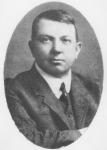Most likely an updated and revised version of St John's 1890 similarly titled pantomime, the extent to which these two productions are related is presently unclear. It is also unclear what, if any, relationship the burlesque has with the similarly named A.C. Torr (aka Fred Leslie) and W. T. Vincent production from 1891. That work, first staged at Melbourne's Princess Theatre in 1891 (22 August) and reproduced in Sydney beginning 5 October, pre-dates the St John burlesque but not his pantomime.
The most probable difference between St John's Cinderella pantomime and his Cinder-Ellen burlesque was an increased focus on both satire and the lampooning of the Cinderella story. In relation to the satirical content, the Brisbane Courier records in its review of the opening night of the 1894 Gaiety Theatre season (possibly the first production of the burlesque version) that 'various local celebrities came in for hard knocks more or less severe,' and that as a result 'the laughter was hearty and frequent.' The review further records that one of the newly-written topical songs, 'In Nineteen Hundred and One' (a trio performed by Messrs. Callaghan, Jones and York), was 'much superior to the usual stage topical song' being 'brimful of clever local hits' (p.6).
While Cinder-Ellen's storyline is unknown, it likely that revisions were made to subsequent revivals (e.g. 1898 and 1900), and that these comprised at the very least new topical hits and songs and dances. It is reasonable to suspect, however, that the main elements of its dramatic organisation were retained for these latter productions. That is not to say that the storyline would have been fully developed as a drama - an aspect which the Courier noted in its 1894 review:
The piece has a plot of a very mild character which in no way intrudes itself upon the marvelous mixture of burlesque and brilliancy forming the principal features of Cinder-Ellen. There is sufficient plot, however, to enable the audience to follow the old story of Cinderella through the varying fortunes of the heroine, from the time when she is the slighted and despised slave of her sisters, till through the good offices of the fairy she becomes the adored of a prince and triumphs over her enemies (p.6).
Among the other musical highlights of the 1894 production were the duet, 'Under the Southern Cross' (sung by Ettie Williams and Ada Lempriere), 'My Little Slate' and 'What Do I Care' (Ettie Williams), 'The Rowdy Dowdy Crew,' (a 'catchy chorus' sung by Priscilla Verne and several others), 'A Half a Pound of Tea' (T. C. Callaghan), 'Bubble's (Priscilla Verne) and 'Silver Star' (Amy Rowe). Another feature, the 'Grand Doll Ballet,' saw five of the female performers singing nursery rhymes and dancing to 'sympathetic music' (6). The first act medley finale, 'Australia,' reportedly included a striking tableaux (Northern Miner 16 February 1894, p.4).
[Source: Australian Variety Theatre Archive]

